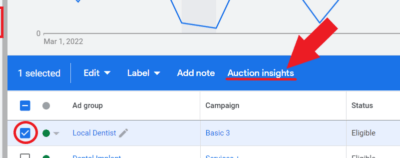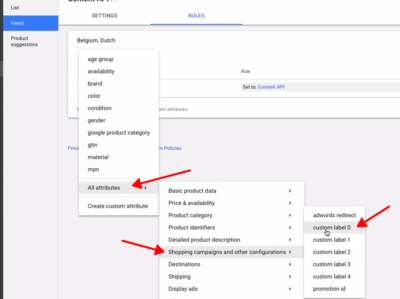Are you hoping your marketing efforts will get more inquiries from qualified singles, and constantly fill your client roster with people who are serious about finding a partner? If your answer is yes, then you came to the right place.
Learn about Google Ads for Matchmakers and apply the following steps to grow your matchmaking business.
Table of Contents
ToggleWhat is Google Ads?
Google Ads is a system where you pay to display your matchmaking business to people searching for your services online. You can also choose to show your matchmaking ads to very specific people. For example, you can target singles in your local area, or people who have shown interest in relationship advice or dating websites. This way, you’re reaching people who are actually looking for your services.
You can see the difference between Paid Advertisements (Google Ads) to an Organic Search Result on the picture below:
- Paid Advertisements (Ads) — These are paid spots at the top or bottom of the page. They’re marked as “Ad/Sponsored”.
- Organic Results — These are the free results the search engine thinks are best for you.
Google Ads can send people to specific pages of your website. You can choose exactly what page on your website people go to when they click your ad. This helps them find the information they need quickly.
You can change your ads anytime. If you see that your ads aren’t working well, you can change them. You can try different words, pictures, or targets.
Google Ads for Matchmakers Campaign Creation
Before we proceed to the process of creating your Google Ads for Matchmakers, you need to take note of the rules Google sets for dating and companionship advertising:
- Google puts rules in place to keep people safe, to stop ads that trick, take advantage of, or harm those looking for dating or companionship.
- Online dating can attract scammers and dishonest practices, Google’s rules work to reduce those dangers.
- Google aims for ads to be helpful and reliable, so users have a good experience when searching.
- Dating services handle private details, so Google’s rules consider what’s legal and right when it comes to privacy and consent.
What Google’s Rules Mean for Dating Advertisers (Especially in 2025):
-
Mandatory Verification
Starting in 2025, dating and companionship advertisers must complete a verification process. This step is designed to confirm that these businesses are genuine and safe.
This added verification is meant to provide an extra level of security for users.
-
Content Limits
Google doesn’t allow certain things in dating ads, such as:
- Pictures or words that are too sexual.
- Ads that help with illegal activities.
- Ads that make false promises.
- Ads that could hurt or endanger people.
-
Who Can See Your Ads
Google might limit who sees your ads, especially to protect those who are more easily taken advantage of.
-
Website Requirements
Your website needs to match your ad and give clear, honest information about your service. Your website must also follow the same rules as your ads.
-
Being Upfront
You must clearly explain what your service offers and tell people about any costs or rules.
-
Staying Informed
Google’s rules can change, so you need to keep checking for updates.
How to Begin Your Google Ads for Matchmakers Campaign
Get a Google Account
To use Google Ads, you need a Google account. Go to accounts.google.com and make one if you don’t have one.
Go to Google Ads
Visit ads.google.com and click Get Started. Log in with your Google account.
Google Ads gives new users free ad credit to encourage them to try the platform. While you don’t have to take this offer to run ads, it can be a helpful way to test things out, get your ads seen, and save some money when you’re just starting.
Choose Expert Mode
Google will ask how you want to set up your ads. Pick Expert Mode for more control. Find and click Switch to Expert Mode.
Overview Page
Look for the +Create or +New Campaign button on the overview page. Click on that and start creating your campaign.
Campaign Objective
For your Google Ads for matchmakers, Leads is a great goal because it helps you get people’s contact information. This lets you build a list of possible clients and talk to them later. You can ask questions to find out if they’re a good fit for your service, saving you time.
Getting contact info lets you talk to each person in a special way, which is important for building trust. You can also see how well your ads are working by counting how many people contact you and become clients. Getting leads starts the process of turning someone into a paying customer. You can also use leads to book meetings and talk to people one-on-one.

Campaign Type
Choose Search as your campaign type as it captures those who are already looking for help finding a partner.
Campaign Name
Creating separate campaigns for different aspects of your matchmaking business is highly recommended. For example, you could have campaigns for specific locations, target audiences (like professionals or seniors), or different services (like coaching or events).

Bidding Strategy
Your Bidding Strategy is how you decide to pay when someone clicks your ad. For your Google Ads for matchmakers, it’s typical to start with Google automatically getting as many clicks as possible within your budget, or by manually deciding how much to spend on each click.
Campaign Settings
Networks
For your Google Ads for matchmakers, it’s best to uncheck both Google Search Partners Network and Google Display Network. This is because you want to focus on people actively searching for your services on Google itself. Showing ads on other websites or search partners might attract people who aren’t specifically looking for a matchmaker, wasting your budget.
Languages
Language settings determine which languages your ads will show for. For your Google Ads for matchmakers, select the languages spoken by your target audience. If you serve an English-speaking population, choose English. If you have a multilingual client base, create separate campaigns for each. This ensures your ads are shown to people who understand them. 
Locations
When you set locations, you tell Google where you want your ads to show. For Google Ads for matchmakers, it’s important to be precise.
Choosing Presence: People in or regularly in your included locations ensures your ads only reach people who are physically in or frequently visit those areas. This is important because matchmakers usually serve clients in a specific geographic area.
Exclude
The Exclude setting lets you block your ads from showing in certain locations. For example, if you serve Los Angeles but not surrounding areas, you can exclude those areas to prevent irrelevant clicks. This ensures your budget is spent on reaching your target audience.
You can target specific cities, regions, or even a radius around your office.
Audience Segments for Google Ads for Matchmakers
To reach the right singles, matchmakers use audience segments. These segments allow them to focus on groups of people who are interested in things like ‘finding a partner’, ‘professional matchmaking’, or ‘dating coaching.’ They can also target people based on their age or location. This way, you show your ads to singles who are actually looking for your help finding a relationship.
Campaign Duration
For Google Ads for matchmakers, running ads is usually an ongoing effort. Because finding love isn’t a one-time thing, your ads should generally run all the time. You might increase your budget or change your ads around special times of year, like Valentine’s Day, but it’s best to have a constant presence.
Ad Schedule
Ad Schedule lets you choose what days and times your ads show. For Google Ads for matchmakers, this is helpful to reach people when they’re most likely to be online and thinking about dating.
For example, you might show your ads more during evenings and weekends when people have more free time.
Ad Groups
Ad Groups help you organize your ads and keywords. For Google Ads for matchmakers, you might have an ad group for “local dating services”, another for “dating coaching”, and another for “elite matchmaking”. This keeps your ads and keywords relevant to specific services or target audiences.
Keywords
When people use Google to find something, they type in words or phrases called keywords. For Google Ads for matchmakers, keywords could be “matchmaker near me”, “dating service for professionals”, or “find a partner in [city]”.
Choosing the right keywords helps your ads show up when people are looking for your services.
Match Types
You use match types to tell Google how exact a search needs to be to your keywords.
Here are the main types and examples for your Google Ads for matchmakers:
- Broad Match
- With this setting, your ad can appear for searches that are connected to your keywords, even if the search doesn’t use the same exact wording.
- Example: Keyword “dating agency” might show for searches like “relationship help”, “find love online”, or “matchmaking services”.
- Phrase Match
- This setting means your ad will show when the search includes your full phrase, in the same order, but it allows for words to be added around it.
- Example: Keyword “professional matchmaker LA” might show for searches like “best professional matchmaker LA” or “professional matchmaker LA reviews.”
- Exact Match
- Your ad only shows for searches that are exactly your keyword, or very close variations of it.
- Example: Keyword “[senior dating service]” will only show for the search “senior dating service” or very close variations of that search.
Ad Copy
Final URL & Display Path
Your Final URL directs potential clients to the specific page on your website that matches your ad’s promise.
The Display Path is a cleaner, more concise version of that URL shown in the ad, designed to enhance clarity and trust.

Headlines
Headlines are the first lines people see in your ad. They should be designed to get noticed and describe your business. For Google Ads for matchmakers, headlines could say things like “Find Your Perfect Match”, “Professional Dating Services”, or “Meet Local Singles”.

Descriptions
Descriptions give more details about your matchmaking service. They explain what you do and why people should choose you.
For Google Ads for matchmakers, descriptions could mention things like “Personalized matchmaking for busy professionals”, “Confidential and effective dating solutions”, or “Expert guidance to find lasting love”.
Sitelinks
You can add extra links below your ad. These links take people to other pages on your site. They are called sitelinks.
For Google Ads for matchmakers, sitelinks could lead to pages like “About Us”, “Success Stories”, “Our Process”, or “Contact Us”. This helps people find the information they need quickly.
Callouts
Callouts are short bits of text in your ad that tell people the good things about your service. For Google Ads for matchmakers, callouts could be things like “Confidential Service”, “Personalized Matches”, “Vetted Singles”, or “Proven Success Rate”. This emphasizes your strengths and attracts potential clients.
Landing Page
A Landing Page is a website page made to get people to become clients. For matchmakers like you, it’s the place where you turn interested singles into customers. It needs to be simple, engaging, and match what the ad was about.
Key Elements of a Landing Page:
- Headlines
- These are the first things visitors see. They should be attention-grabbing and clearly state the primary benefit of your service. Examples: “Find Your Ideal Partner in [City]”, “Exclusive Matchmaking for Professionals”, or “Stop Swiping, Start Connecting.”
- Hero Image
- A large, visually appealing image or video at the top of the page. It should evoke positive emotions and represent the desired outcome (e.g., happy couples, elegant settings, or confident singles).
- CTA (Call to Action)
- This is the action you want visitors to take. Examples: “Schedule a Free Consultation”, “Apply for Membership”, “Learn More”, or “Download Our Guide”. It should be prominent and use action-oriented language.
- Key Benefits
- Clearly outline the advantages of using your matchmaking service. Focus on what matters to your target audience, such as personalized matches, confidentiality, time savings, or higher success rates.
- Unique Selling Proposition (USP)
- What makes your service different from competitors? Highlight your unique approach, expertise, or success rate. Examples: “Our proprietary matching algorithm”, “Exclusive network of vetted singles”, or “Personalized coaching with every match”.
- Address Users’ Concerns
- Address common concerns, such as privacy, cost, or the quality of matches. Use reassuring language and provide clear information.
- Contact Lead Form
- A concise form to collect essential information, such as name, email, phone number, and location. Keep it short to minimize friction.
- Testimonials/Social Proof
- Use good reviews from past clients, or show things like awards or news stories about your business. This helps people believe in you.
- Adding pictures makes it even better.
Matchmaking Service Landing Page Sample:
Budget
Your Google Ads Budget is how much money you want to spend on your ads. You pick how much you’ll spend each day. Pick an amount you’re okay with, and that helps your business. You can change it later. It’s smart to start small and spend more when you see your ads working.
Publish Your Campaign
Before you hit that “Publish Campaign” button, take a moment to double-check everything. You’ve poured time and effort into setting up your Google Ads for matchmakers campaign, and it’s essential to ensure it’s ready to go.
Quickly review your keywords, ad copy, budget, and targeting settings. Make sure your landing pages are working correctly and that your ad extensions are all in place. It’s also a good idea to confirm that your bidding strategy aligns with your goals and that you’ve included any necessary negative keywords.
A final glance at your location and language settings will help prevent any unwanted surprises. Taking this extra minute to verify your work will give you confidence that your campaign is set up for success and will help you avoid costly mistakes.
Once all is observed carefully, click Publish Campaign.

Optimize Campaign
Use Keyword Planner
Google Ads has a free tool called Keyword Planner. It helps you find good words to use in your ads. You can see how often people search for those words and how much you might pay to use them. This helps you find the right people and know how many other businesses are using those words.”
Keyword Search Result on ‘matchmaker’ in Los Angeles, California:
Negative Keywords
Negative Keywords are words you tell Google to avoid. This stops your ads from appearing for searches that aren’t a good fit, so you save money.
For example, if you’re a matchmaker who focuses on in-person services, you might add “online dating” or “dating apps” as negative keywords. This ensures your ads only reach people who are looking for the type of matchmaking services you offer.
Conclusion
In summary, creating a successful Google Ads campaign for a matchmaking business involves careful planning and execution. From setting clear objectives and choosing the right campaign types to crafting compelling ad copy and targeting specific audiences, each step plays a crucial role. You need to understand keywords, match types, ad extensions, and bidding strategies. Building effective landing pages that address user concerns and provide clear calls to action is also essential. Remember, ongoing monitoring and optimization are key to maximizing your return on investment (ROI).
Think about reaching singles actively searching for your services, showing up right when they need you. This is the power of Google Ads. It allows you to precisely target your ideal clients, ensuring your message reaches those most likely to become paying customers. By focusing on local searches, specific demographics, and relevant keywords, you can fill your client roster with serious singles ready for lasting relationships. Using Google Ads can really help matchmakers get noticed and find new clients.
Why choose our agency? Google Ads is not as simple as just turning it on. You need to think about who you want to reach, how much money you can spend, and how many other matchmakers are also trying to advertise. Plus, Google has rules about dating ads, so you have to make sure you follow those too. We can help you. We understand the unique challenges and opportunities of the matchmaking industry. We’ve helped thousands of business achieve significant growth through strategic Google Ads campaigns. View our detailed project outcomes at YoYoFuMedia’s Case Studies Page.
Our proven methods, combined with our deep understanding of the platform, ensure that your investment translates into real, tangible results. Let us take the complexity out of online advertising, allowing you to focus on what you do best: creating meaningful connections. We have the experience and the track record to make your matchmaking business thrive. Contact Us Now!




















